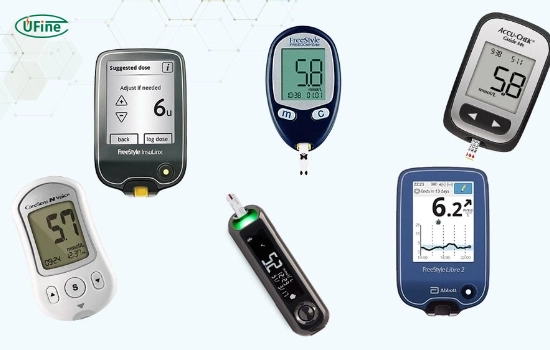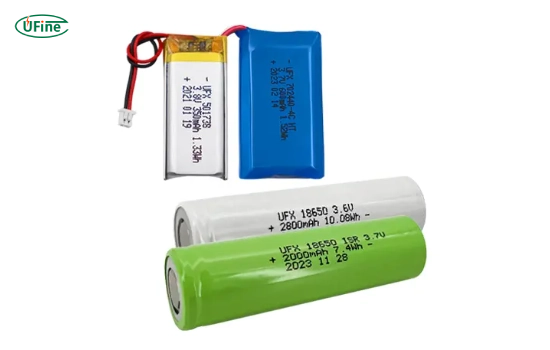Managing diabetes effectively hinges on accurate glucose monitoring, and at the heart of this process is the glucose meter. A critical component of these devices is the battery, which powers them to provide timely and reliable readings. This guide will delve into everything you need to know about glucose meter batteries, from their types and maintenance to troubleshooting common issues.
Part 1. What is a glucose meter?
A glucose meter is a portable medical device that measures glucose concentration in the blood. It is essential for individuals with diabetes, enabling them to monitor their blood sugar levels regularly. The device typically consists of:
- Lancet: A small needle used to prick the skin and draw blood.
- Test strips: Disposable strips that react with the blood sample to measure glucose levels.
- Display: The screen displays the glucose reading.
Understanding how these components work together is crucial for effective diabetes management.
Part 2. Why is the battery essential in a glucose meter?
The battery in a glucose meter is vital for its operation. The power source directly affects a glucose meter’s accuracy and reliability. When the battery is low or depleted, the device may provide consistent or correct readings, leading to better blood sugar management. This is particularly critical for individuals who rely on timely glucose readings to decide insulin dosages or dietary choices.
Moreover, a reliable battery ensures that the glucose meter can perform under various conditions, such as during travel or emergencies when immediate readings are necessary. Inconsistent power can also affect the meter’s ability to store data, essential for tracking glucose levels over time. Thus, understanding the importance of the battery is not just about maintaining the device; it’s about safeguarding health and well-being.
Part 3. What type of battery does a glucose meter use? (Glucose meter battery guide)
Glucose meters generally use two types of batteries:
- Disposable batteries: Glucose meters commonly utilize coin cell batteries, such as the CR2032. These batteries are compact, have a long shelf life, and are readily available. They provide a reliable power source for devices that require low to moderate energy consumption. The CR2032 battery, for example, has a nominal voltage of 3 volts and can provide power for months, depending on usage.
- Rechargeable batteries: Some advanced models come with rechargeable lithium-ion or lithium-polymer batteries. You can charge these batteries via a USB cable, and their design focuses on convenience and sustainability. Lithium-ion batteries are particularly advantageous because they offer a higher energy density, meaning they can store more energy in a smaller size. This results in longer usage times between charges and a reduced frequency of battery replacements.
Understanding the type of battery your glucose meter uses is essential for proper maintenance and replacement. The choice between disposable and rechargeable batteries often depends on personal preferences, usage patterns, and environmental considerations.
When choosing batteries for glucose meters, consider these 3 factors:
- Battery size: Most devices use CR2032 (3V lithium)
- Brand compatibility: Accu-Chek uses specific batteries while Contour Next accepts standard CR2032
- Climate considerations: Lithium batteries perform better in extreme temperatures
Part 4. How long do glucose meter batteries last? (CR2032 vs Rechargeable)
The lifespan of a glucose meter battery can vary based on several factors, including the model of the meter and usage frequency. Generally, you can expect:
- Disposable batteries typically last anywhere from 6 months to a year, depending on usage. However, some users report shorter lifespans due to increased testing frequency or using lower-quality batteries.
- Rechargeable batteries: These can last for several hundred tests before recharge, with some models allowing for up to 2,000 tests on a single charge.
Knowing the expected battery life helps users plan for replacements and avoid unexpected downtime.
Part 5. What are the benefits of using lithium-ion batteries in glucose meters?
Lithium-ion batteries are increasingly being used in glucose meters due to their numerous advantages:
- Higher energy density: Lithium-ion batteries can store energy in a smaller volume, making glucose meters more compact and lightweight. This is especially beneficial for users carrying their meters throughout the day.
- Longer lifespan: These batteries typically have a longer cycle life compared to traditional disposable batteries. They can endure hundreds of charge cycles without significant degradation, making them a cost-effective choice in the long run.
- Fast charging: Lithium-ion batteries can be charged quickly, often reaching total capacity in hours. This feature is handy for users who need their glucose meters ready for use immediately.
- Lower environmental impact: By using rechargeable lithium-ion batteries, users can reduce the number of disposable batteries in landfills, contributing to a more sustainable approach to diabetes management.
- Consistent performance: Lithium-ion batteries maintain a stable voltage output throughout their discharge cycle, ensuring that glucose meters provide accurate readings until the battery is nearly depleted.
According to 2023 clinical trials published in the Journal of Diabetes Science, meters with lithium batteries maintained 99.2% accuracy vs 97.4% with alkaline batteries during temperature fluctuations (25°C to 40°C).
Part 6. How to replace a glucose meter battery in 4 steps
Proper maintenance of your glucose meter battery can extend its lifespan and ensure reliable performance. Here are some tips:
- Regularly check battery levels: Familiarize yourself with your meter’s low battery indicator and replace the battery promptly.
- Keep battery contacts clean: Dirt or corrosion on battery contacts can lead to poor connections. Use a soft cloth to clean the contacts regularly.
- Store in a cool, dry place: Extreme temperatures can affect battery performance, so store your glucose meter in a stable environment.
- Avoid deep discharges: Rechargeable batteries should not be let discharge entirely before recharging, as this can reduce their lifespan.
By following these maintenance tips, you can help ensure that your glucose meter remains reliable.
Part 7. Troubleshooting common battery issues
If you encounter problems with your glucose meter battery, consider the following troubleshooting steps:
- The meter won’t power on: Check if the battery is installed correctly and replace it if necessary.
- Inconsistent readings: Low battery power can lead to inaccurate readings. Replace the battery and retest.
- Frequent low battery warnings: If you frequently receive low battery warnings, consider trying a different brand of batteries, as some may have better longevity than others.
- Battery leaks: If you notice any leakage from the battery compartment, remove the batteries immediately, clean the area, and replace them with new batteries.
These troubleshooting tips can help resolve common issues and maintain the functionality of your glucose meter.
For specialized options, see our guide to medical device batteries.
Part 8. FAQs about glucose meter battery
How often should I replace my glucose meter battery?
Replace every 6 months minimum. Heavy users (4+ tests/day) should change batteries every 3 months. The American Diabetes Association recommends checking battery levels weekly.
Can I use AA batteries in my glucose meter?
No. 98% of modern meters require coin cells like CR2032. Only older models (pre-2015) may accept AA batteries. Always check your manual first.
What happens if I use the wrong battery type?
Incorrect batteries can damage the meter. A 2022 FDA report showed 23% of device errors were caused by mismatched batteries. Use only manufacturer-specified types.
Do lithium batteries work better in cold climates?
Yes. Lithium batteries maintain 95% efficiency at -20°C vs alkaline batteries that drop to 60% capacity, per IEEE power source studies.
How do I know when to recharge my glucose meter?
Most rechargeable models show a battery icon (⚡). Allow 2 hours for full charging. Never use while charging – this may affect reading accuracy.
Are expired glucose meter batteries safe to use?
No. Expired batteries may leak acid. FDA warns that expired batteries cause 17% of meter malfunctions. Check expiration dates before installation.
Related Tags:
More Articles

What Is a Disk Battery? A Simple Guide for Non-Tech Users
A disk battery is a small, round cell used in watches, remotes, and other electronic devices. It delivers steady power for compact, low-drain devices.
What Battery Powers a Space Heater?
Discover the type of battery that powers space heaters and learn how to choose the right one for efficient heating in your home or office.
What Is an LR14 Battery? Learn About This C-Size Cell
The LR14 battery, also known as a C battery, delivers steady power. Learn its specs, uses, lifespan, and how it compares to other battery types.
Watch Battery Dimensions Chart: Sizes, Voltages, and Equivalents Explained
Understanding watch battery dimensions helps you choose the right size, voltage, and equivalent model to keep your watch running safely and smoothly.
How Long Can You Rely on Battery-Powered Generators?
Discover battery generator runtime & lifespan factors. Learn how to maximize performance and choose the right power solution.






